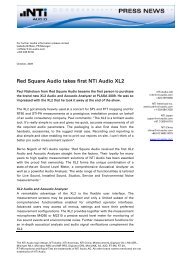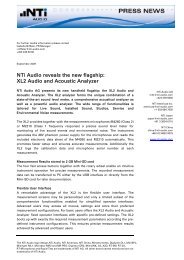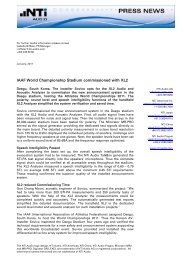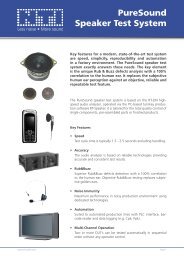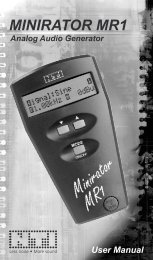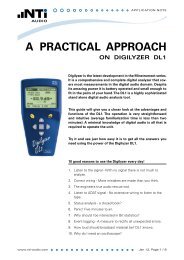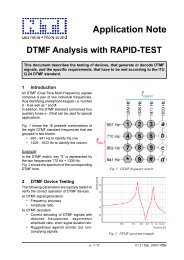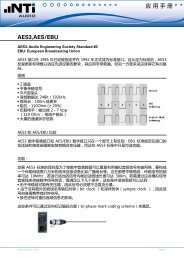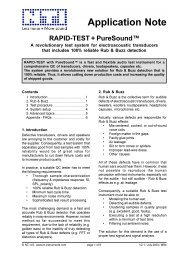Minilyzer ML1 User Manual
Minilyzer ML1 User Manual
Minilyzer ML1 User Manual
Create successful ePaper yourself
Turn your PDF publications into a flip-book with our unique Google optimized e-Paper software.
actual range or the up/down keys to increase or decrease the<br />
range (sensitivity) of the bargraph scale.<br />
• Press enter to confirm your setting.<br />
display filter: see Display Mode<br />
NOTES • For balanced input levels higher than +20 dBu, the<br />
<strong>ML1</strong> Adapter -20dB may be applied. (for details see<br />
Accessories).<br />
• The LEVEL RMS function is also available in the<br />
sWeep mode and in 1/3 rd oCT. rMs mode<br />
Level Relativ<br />
This function measures the input RMS level, relative to a user-defined<br />
reference level.<br />
The reference level has to be<br />
defined in the following way:<br />
• Select the LEVEL REL<br />
mode<br />
• Apply the intended<br />
reference level to a<br />
<strong>ML1</strong> input connector.<br />
• Move the cursor to the<br />
REF field below the main<br />
result line and press the<br />
enter key<br />
Measurement Functions<br />
Fig 3.2 Level Relative Meter Panel<br />
19<br />
Reference Level<br />
This stores the applied level as the current reference level for all further<br />
level relative measurements until a new reference level is set. The<br />
level relative is indicated in dBr (dB relative) or %.<br />
The level relative function may be used to measure the signal-to-noise<br />
ratio (S/N) of a device under test (DUT) in the following manner:<br />
• Set the unit of the level relative measurement to dBr.<br />
• Connect the DUT output to the <strong>ML1</strong> and mute the DUT output.<br />
• Adjust the reference level to this signal as described above. By<br />
this, the ‘noise’ signal of the DUT is acquired.<br />
• Enable the DUT, thus applying the signal to the <strong>ML1</strong>. The resulting<br />
level relative value reflects the S/N ratio in dB.




